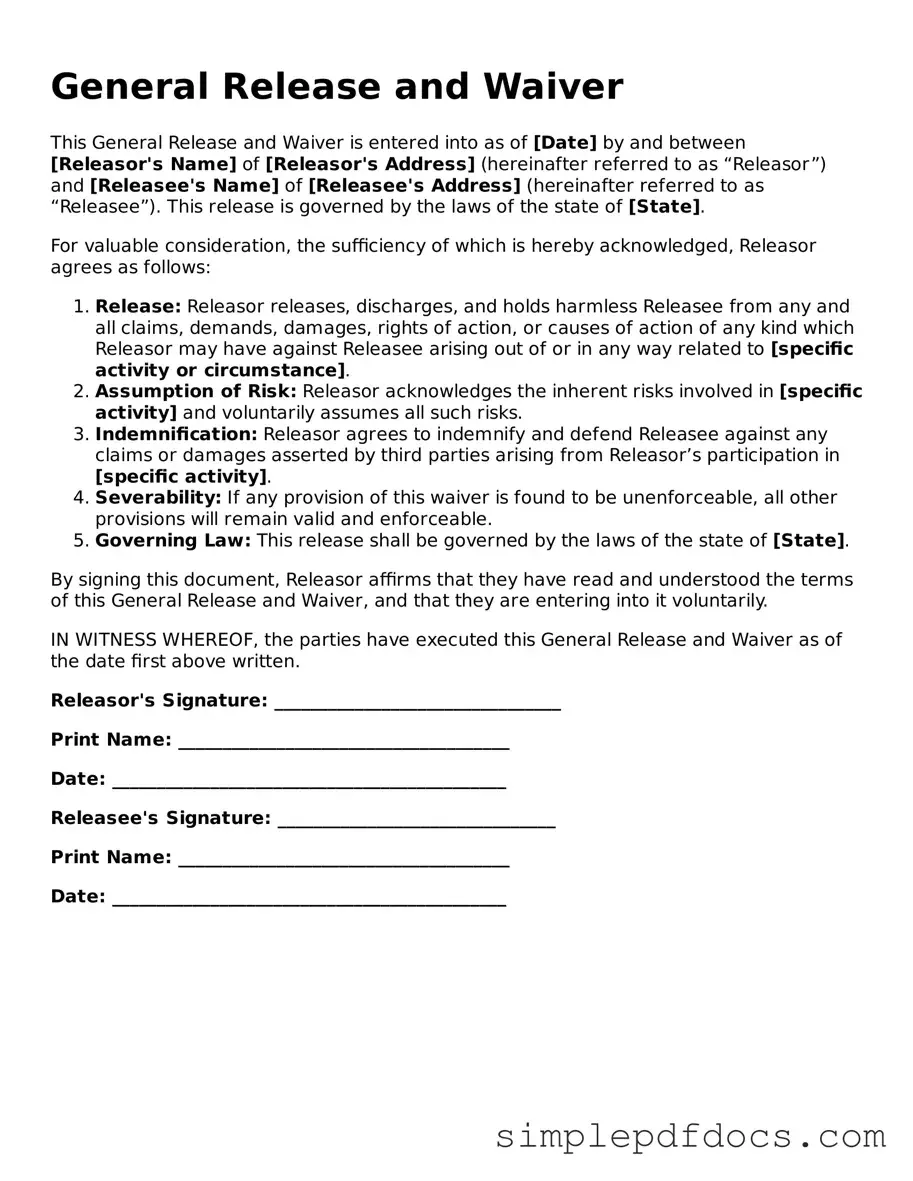Attorney-Approved General Release and Waiver Form
The General Release and Waiver form serves as a legal document in which an individual relinquishes their right to pursue any future claims against another party. This form is commonly used in various contexts, including settlements and agreements, to ensure that all potential legal actions are resolved. By signing this document, individuals acknowledge that they understand the implications of their decision and agree to forfeit any claims that may arise in the future.
Get Document Here
